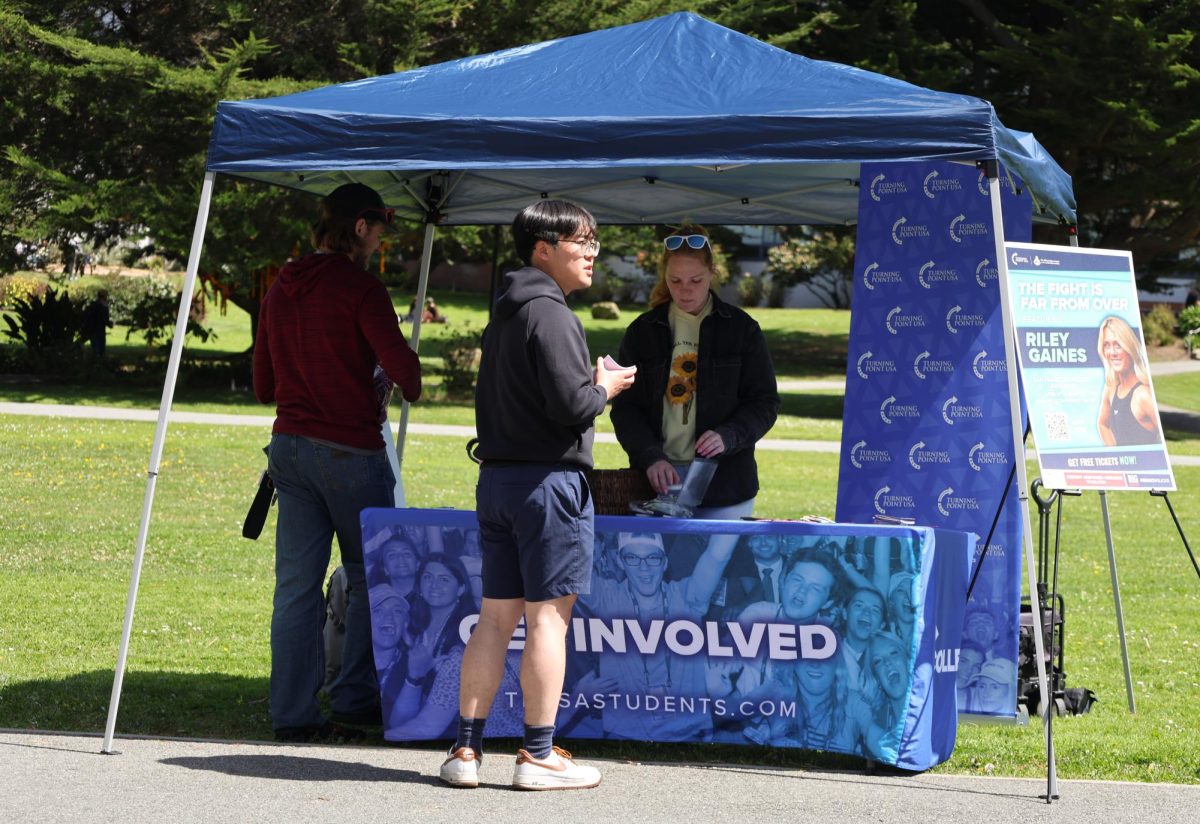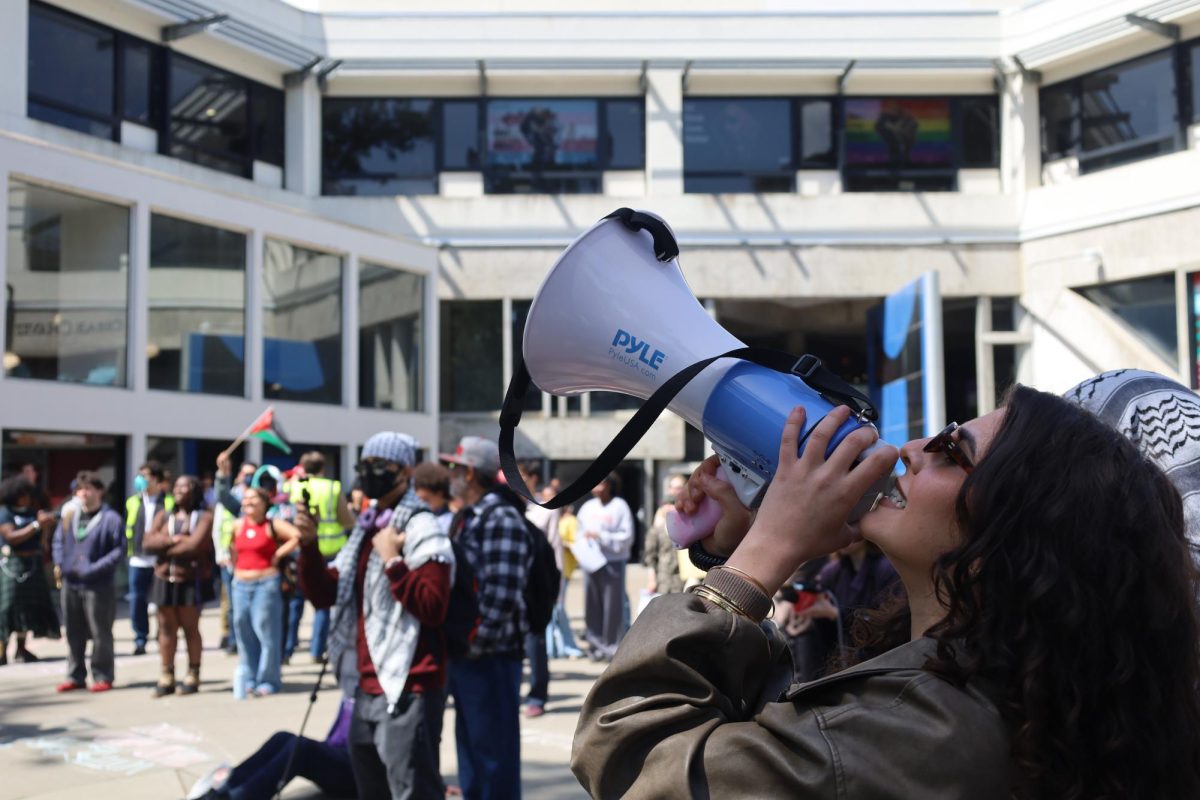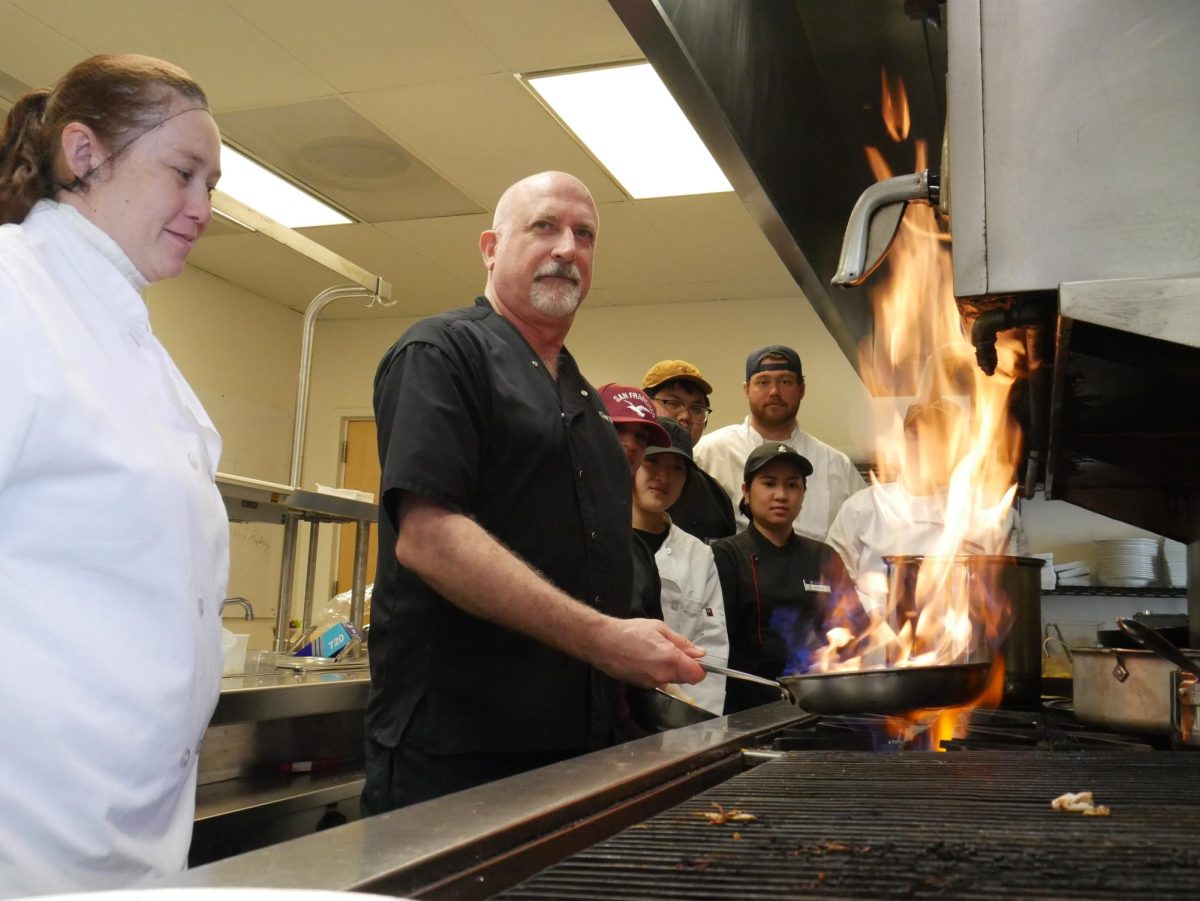
When heavy rain hits the Creative Arts building at SF State, buckets are in place to relieve the leaky roof and, on rare occasions, a ceiling tile tears away from its dwelling place.
The building opened in 1956, so when the plans for the new Mashouf Performing Arts Center were unveiled Feb. 24, those involved with the College of Creative Arts exhaled a long-awaited sigh of relief.
“All of our facilities are on the breaking point,” said Joan Arhelger, professor of theatre arts. “We clearly need an update from this dilapidated building.”
But a leaky roof and windy hallways aren’t the only concerns on the lengthy list of reasons for a new building. Add outdated equipment to that list and you start to get the idea.
On the same day that the designs for the 242,150-square-foot center were displayed, the building blew a fuse. A 24-hour power outage shrouded a quarter of the building, leaving music majors to rehearse in the dark.
Replacing the 600-amp fuse was impossible because that particular type of fuse is no longer manufactured. Instead, it was sent to San Jose for repair, which was expensive, according to Steve Lahey, director of creative arts technical services.
“We’ve outgrown this building,” Lahey said. “It’s like trying to put together a ’57 Chevy with a ’97 Jaguar. The parts just don’t match.”
Plans for the Mashouf Performing Arts Center promise state-of-the-art equipment and technology, along with extended rehearsal and academic spaces.
The center was named after alumnus Manny Mashouf who, along with Neda Nobari, made a $10 million donation for the building – the largest private donation in the University’s history.
“To be able to take advantage of the new technology that the new building will afford our students is tremendous,” said Todd Roehrman, chair of the theatre arts department.
Students in the department know firsthand the frustration afforded them by the current building.
Sophomore Mike Lyons said that during production of a play last semester, he had to fix a light with tape and tin foil. He hopes that with the new building, funds will be available for proper repairs and replacements.
“The fact that we’re getting a new (building) shows that the school still cares about the arts,” said Erin Gibb, a sophomore in the theatre department.
The curvy, white Mashouf Center will extend from the corner of Font and Lake Merced boulevards. Construction will unfold in three phases and is scheduled for completion in 2023.
The first phase will focus on the 1200-seat auditorium that will have interwoven balconies draping over the stage. The auditorium will be used to foster partnerships between the University and professional groups, such as the San Francisco Opera or San Francisco Ballet, who could utilize the space for smaller, more experimental shows, said Dean of the College of Creative Arts Kurt Daw.
Outside groups could possibly have to rent the auditorium, but the space will also be available for educational purposes for students and faculty, Daw said. The BECA department will also use the auditorium to instruct students on capturing and editing live performances.
Four other theatres – the largest one being the 450-seat Little Theatre – will be available for departments’ performances with a minimal usage fee the same way McKenna Theatre and others are currently available.
Construction of these four theatres will occupy the bulk of phase two, and phase three will be dedicated to constructing the BECA department, the school of music and dance, and most instructional spaces.
Funding for the entire Mashouf Performing Arts Center, which is estimated at $260 million, has not been made available. With each new phase, SF State will have to submit a new budget proposal to the Chancellor’s Office, according to campus planner Wendy Bloom.
Many people wonder why the University is able to fund large construction projects while course offerings continue to diminish.
Typically, the state allots a certain amount of money for infrastructure and a separate amount for academic expenditures.
“Funds for construction projects are separate from funds for providing classes,” said Ronald Caltabiano, dean of the College of Creative Arts, in an email. “The two budgets do not intermingle, so we would gain nothing by not going ahead with this new project.”







